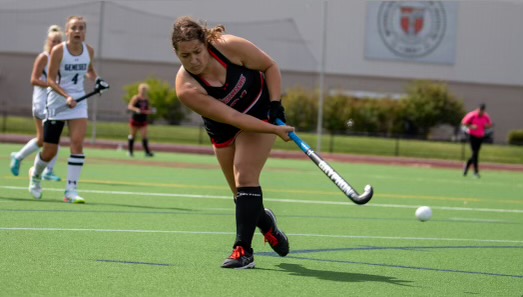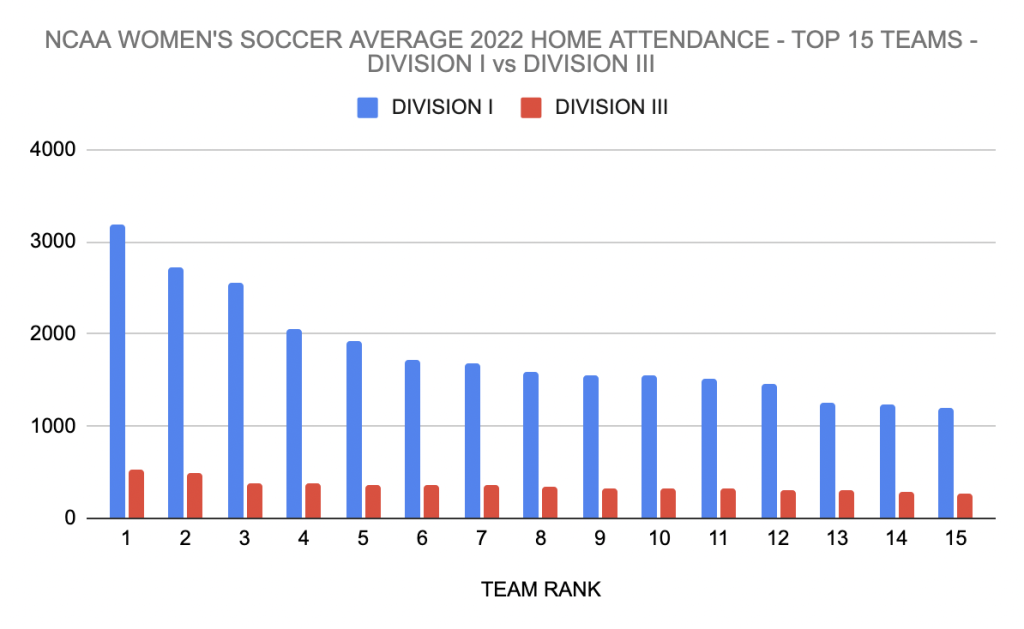By: Sydni Zfira
In the realm of collegiate sports, a persistent challenge looms: women’s college sports aren’t getting the spotlight they deserve. As universities strive to elevate their athletic programs, the disparity in attention and resources between men’s and women’s sports remains very apparent. Even as female athletes shatter records and push boundaries, their achievements often go unrecognized, highlighting the ongoing struggle they face.
“I think a lot of it is finding those personalities that attract people,” said Patrick Warren, a Reporting Intern for the Buffalo Bills. “Finding the best players in the sport and doing more digging on their background and what makes them a good player.”
Struggles at Division III Level
While Division I women’s sports, such as basketball, volleyball and gymnastics often receive heightened visibility, Division III women’s sports usually fly under the radar, operating on a smaller scale with limited resources for marketing and promotion. Therefore, Division III sports often deliver more intimate and community-oriented experiences. However, the programs are also overlooked by the media and spectators.

Dani Samuelson, a fourth-year collegiate field hockey player at Rensselaer Polytechnic Institute in upstate New York, has been honing her skills in this predominantly female sport for as long as she can remember, but she feels like it is often overshadowed.
“I do not think that [field hockey] gets enough attention due to it being a female sport because not many people in America have seen field hockey being played. Globally, however, it is a very popular sport, but I feel like most people prefer to watch the men’s teams,” she said.
Samuelson sees firsthand how women’s sports within her own university don’t garner the proper attention. “I’ve noticed favoritism towards men’s teams especially when it comes to allocating funds for food and/or gear,” she said. “My school, however, is starting to try to address these differences, especially with our first ever female athletic director, Dr. Kristie Bowers, who was appointed this past fall.”
Disparities in Coverage and Attendance
A USC/Purdue study revealed that 95% of total television coverage, including major networks like ESPN, neglects women’s sports in favor of men’s sports like football, baseball, and basketball. This lack of media coverage contributes to the disparities in attendance between men’s and women’s college sporting events.
“The coverage of women’s sports hasn’t increased in terms of television news and highlights shows, the more critical components of the ‘larger media apparatus’ that helps create audiences for sports,” said author Michael Messner in the study.
The impact of this media bias can be felt in the stands at women’s college sporting events. While men’s games draw crowds and enthusiastic supporters, most women’s games often struggle to fill seats. This lack of attendance not only affects the atmosphere and the energy of the games, but it also has financial implications for the athletic departments.

The Caitlin Clark Effect: A Beacon of Hope
At the University of Iowa, women’s college basketball attendance has been skyrocketing and has garnered more attention than ever before. This is because of Caitlin Clark, a senior guard who has a generational talent. Crowds flock to wherever Clark is playing and she has had the unique ability to bring in people from all over the country.
“Star power has been super helpful for the growth of women’s sports,” said Warren. “It’s not like there hasn’t been amazing basketball players in the past, but with the combination of NIL exploding, Caitlin Clark is more of a public figure than other players have been.”
This season, Iowa drew sold-out crowds to many of the road game arenas and places like Northwestern and Nebraska had its first in program history. According to the AP, schools that have hosted Iowa Women’s Basketball have seen an increase in attendance over 150% compared to their other home games. However, the Caitlin Clark effect is only doing so much for NCAA women’s basketball.
Challenges at USC and Beyond
In the dynamic sports scene of major markets like Los Angeles, attracting audiences, both from within the student body and broader fan base, poses a considerable challenge.

Crash Collier, a junior at USC, is known for his spirited presence adorned with yellow caution tape around his forehead. Whether it’s rallying behind the men’s teams or cheering on the Women of Troy in basketball and volleyball, Collier has immersed himself in USC’s sports culture. Yet, he has noticed the lack of attention and fans at the women’s sports and has attributed it in part due to the fans upbringing.
“I think it is more about the exposure people got [to women’s sports] when they were growing up,” said Collier. It is evident from just seeing the Galen Center on the average night for a men’s game versus the average night for a women’s game.”
Then, there’s USC’s rising star freshman Juju Watkins, who has yet to witness the same crowd sizes during regular season games in Los Angeles. Nevertheless, Watkins continues to etch her name in USC’s record books, shattering milestones, such as becoming the all-time leading freshman scorer and beating Cheryl Miller’s record for the most 30-point games in a season.
As the Women of Troy continue to prove themselves as a powerhouse top 10 team with their number one seed in this year’s NCAA tournament, they should garner more local attention and national recognition in the coming seasons.
“At the end of the day I think people just need to show up,” said Collier. “It’s a bummer because you’d think people would want to show up more to the women’s games because they are winning.”
Boosting Support: Changing the Marketing Strategy
Efforts to improve attendance at women’s games have taken on a multifaceted approach, with universities like USC implementing strategies, such as special ticket offers and giveaways to entice fans. “From personal experience, USC Athletics giveaways have been most helpful in getting students and audiences to come to women’s college sports,” said Emily Mojica, a USC Athletics Marketing and Promotions intern.
Mojica sees a difference between how giveaways are marketed at men’s games versus women’s games, but thinks that the stark contrast is strategic. “At men’s games we distribute giveaways at the entrance before the game even starts,” she said. “At women’s games we try to distribute giveaways at halftime to encourage our audiences to stay throughout the game.”
Recently, the athletic department welcomed new leadership to the team. Mojica believes that this will only increase the level of exposure and support for women’s sports at the university. “Here at USC Athletics, our Athletic Director, Associate Athletic Director, and Director of Marketing are women,” said Mojica. “Their passion for sports and women’s sports ensures that we don’t only overly market men’s sports.”
As these initiatives continue to evolve, women’s sports are poised for a more inclusive and prominent position in the sports landscape.
Conference Realignment
Currently, Division I programs are undergoing a major shift in conference affiliations, driven by factors such as financial considerations, geographic alignments, and competitive opportunities. While the focus has been on the impact of high-profile men’s sports, it is important to recognize the ripple effect that realignment has on women’s sports.
On one hand, realignment may result in increased exposure and competition within a more prestigious conference, providing women’s teams with greater visibility and opportunities to showcase their talent on a larger stage. However, conversely, realignment has logistical challenges, such as increased travel distances, which makes it difficult for fans to travel across the country to watch their teams.
Starting in the 2024-25 academic year, the BIG 10 will now consist of 18 teams, adding UCLA, Washington, Oregon and USC to the conference. These schools will be no closer than 1,400 miles from any of their new conference opponents.
As they begin to navigate this new landscape, it’s imperative for universities and athletic departments to prioritize the equitable treatment and support of women’s sports programs. This includes ensuring that adequate resources, facilities, and promotional efforts are allocated to these programs, regardless of conference affiliation.
Looking Ahead
While Division I female sports like basketball and volleyball have seen an increase in media coverage and spectator interest, there remains a need for greater recognition and visibility for sports at Division III schools and beyond.

“Our fans are almost strictly parents. No one really comes to support our games or really any of the other female teams,” said Samuelson. “If we do get students, it’s likely athletes stopping by to watch a little of the game on their way to practice.”
Fostering a culture of support and appreciation for women’s athletics at all levels of competition and all types of sports is essential in cultivating a more inclusive and equitable sports landscape for future generations of female athletes.
“I hope one day people will realize the effort and excitement that goes into all female sports and will want to support the athletes and the games,” said Samuelson.